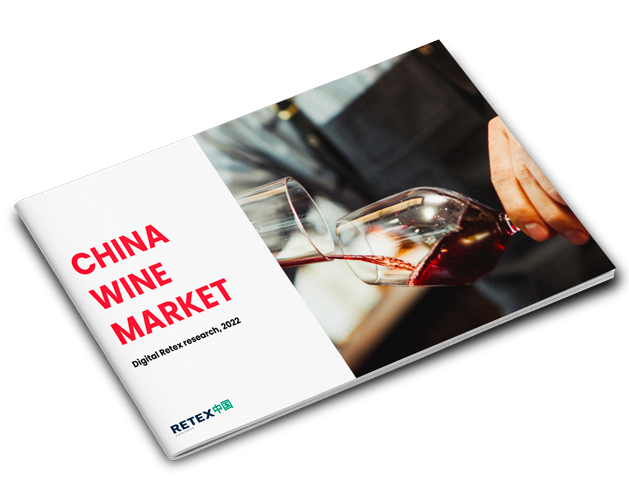China discovers the pleasure of wine
The evolution of tastes, traditions, and consumption in recent years has led China to increasingly appreciate a typically European alcoholic beverage that is often considered distant from its culture: wine. And if until five years ago the wine consumer was identified with the very wealthy elites of Beijing and Shanghai, today the sweep of those who appreciate and drink it is much broader and more varied.
How many and who are the Chinese wine lovers
Is wine in China a business for well-educated and voluptuous businessmen, attentive to the latest fashions from Europe and the United States? Not anymore. From 2017 to the present, the industry’s sales value in the country of the Great Wall has nearly doubled, crossing the $123 billion mark and involving more and more people across the country.
In 2021, there were more than 52 million regular wine consumers, dispelling several myths: first of all, people are also drinking it at home, no longer just in fine restaurants, and consuming it on every occasion, not just during important occasions. Drinking alone a glass of red wine, perhaps at the end of a long day at work while relaxing in one’s own home, is among the new habits that the Chinese public has inherited from the long lockdown periods during the COVID-19 pandemic.
This new attitude toward the consumption of a sought-after drink far from-traditional alcohol currently involves mainly the Guandong area, which accounts for about one-third of Chinese wine lovers, but also the Shanghai, Zhejiang and Fujiang areas have recorded considerable increases, as have the Beijing and Tianjin provinces.
Analyzing the ideal buyer personas in more detail, three consumer profiles stand out.
The regular ones (about 9 percent), mostly residing in large urban areas, with large budgets and advanced education, who mainly look abroad and at the most renowned brands.
The occasional ones, who drink or give wine as gift for special occasions, such as Chinese New Year or Singles’ Day, looking mostly for discount or low-priced bottles and therefore with changing and not established consumption habits.
Finally, young adults won over through social and digital platforms, with tastes not yet fully mature but open to experimentation, oriented towards curious and mid-price choices: this is the largest (26 percent of the total), varied and interesting consumer group.
The key drivers of growth
Several socio-economic dynamics have contributed to driving wine consumption in China. First, the expansion of the middle class, thus the increase in average earnings and the availability of spending even on non-primary needs goods which has allowed wine consumption to become more commonplace and no longer perceived as an elitist drink; second, the rapid urbanization which has favoured the spreading of wine through bars and meeting places with a more international flavour; and finally, the perception of wine as a healthy alcoholic drink, which if consumed in small doses it helps sleep, relaxes and makes the skin more beautiful.
The combination of these variables has shaken up the wine market, increasing both its attractiveness and desirability, giving rise to interesting modes of enjoyment never before seen in China.

The most interesting trends in such a prolific market.
Enthusiasm for wine is bringing greater awareness to the subject even among younger people, with specific courses and professional schools, certifications and special events such as winery dinners and tastings. This movement has also led to the creation of real wine tourism routes, both locally and with international trips in search of the historic landscapes of the best wines.
More culture and more awareness also mean an adjustment of taste, which is gradually becoming more attentive and sophisticated, able to recognize the finest vintages that can today also be found online, in a now fully multi-channel system of promotion and sales. Buying wine in China has never been easier, thanks to e-commerce and related offline experiences.
The most popular wines in China
But what are the favourite wines among Chinese consumers? Red wines dominate the Chinese market, collectively accounting for 90 percent of sales. Among the reasons for such obvious success is the perception that it is a healthier product, thanks precisely to its colouring, which refers to the traditional concept of well-being in local culture.
However, white wines are increasing their presence on the scene, thanks mainly to the interest of the young female audience who appreciate their clarity, freshness and simplicity.
A strategy for approaching the Chinese public
Approaching such a vibrant and expanding market requires special attention and preparation, with a careful study of wines capable of capturing the attention of Chinese consumers and a strategy capable of positioning them appropriately. If multi-channelling is a must, it means that in addition to studying logistics, distribution and related partnerships, the online presence must be taken care of in detail, including e-commerce, social networks and the most suitable marketplaces.
These include Tmall, which brings together about 50 percent of industry brands, and JD.com, which attracts 26 percent of them: these are two of the largest generalist online shops in China with over 1 billion active users altogether.
Equally crucial is the organization of communication channels for direct sales through WeChat and its mini-programs, i.e., through the most popular messaging network on the mainland and most appreciated by young people.
Finally, it may be interesting to complement the own online presence with exclusive mini-boutiques as a way of standing out from competitors, especially French, Chilean and Spanish, who dominate the Chinese market.
It is precisely at this strategic-organizational stage that Retex’s overall vision and vertical expertise make all the difference. Making China toast with good Italian wine is an intriguing challenge



